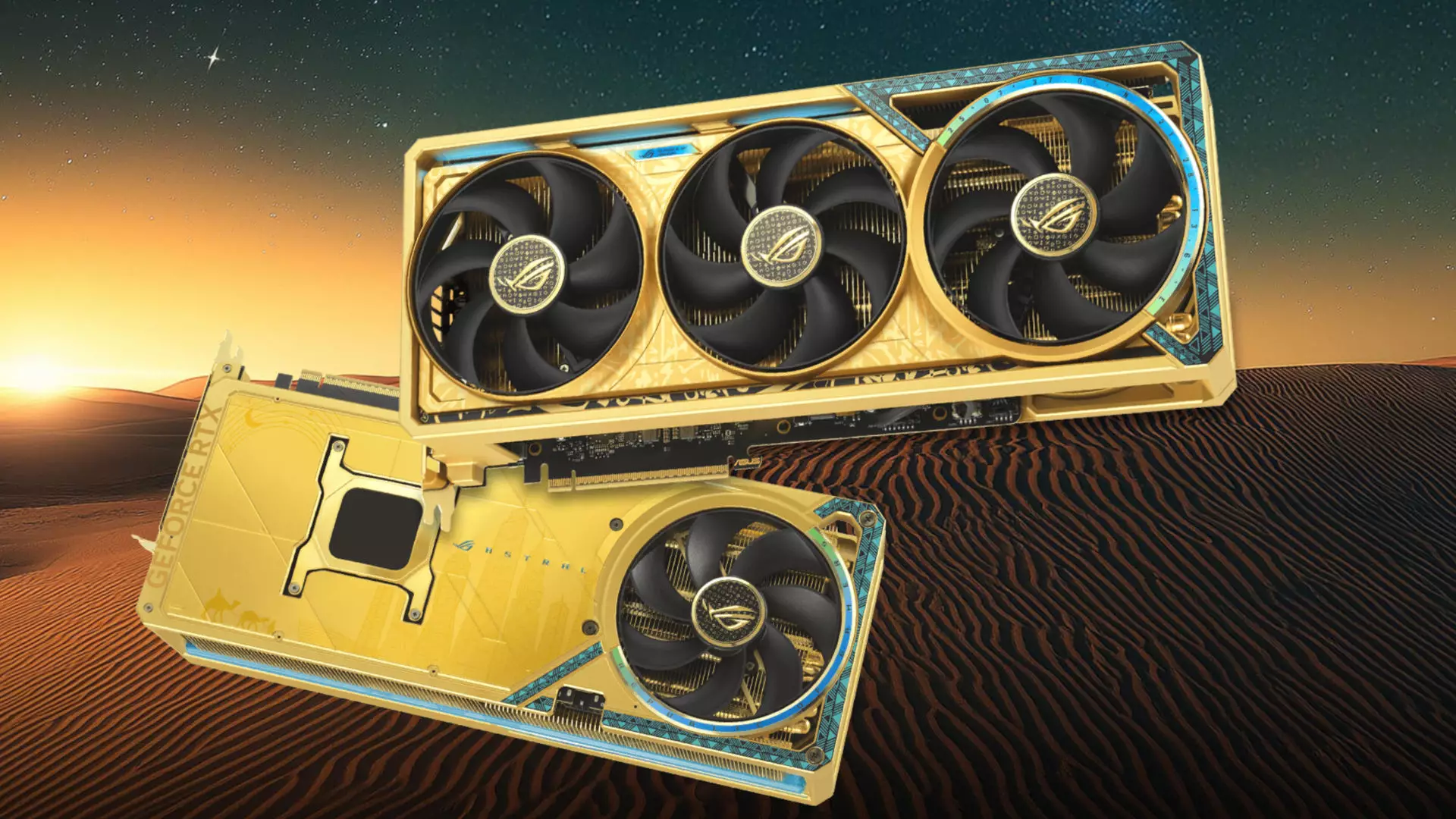In the realm of gaming hardware, graphics cards have become the modern-day equivalent of luxury items, reserved for the affluent. The escalating prices of these technological marvels are hardly a surprise; they’ve been rising for years. As the demand for high-performance gaming surges amidst the popularity of virtual reality and 4K resolution gaming, enthusiasts are forced to reconsider what they are willing to spend. Enter Nvidia’s latest flagship, the GeForce RTX 5090 Founders Edition, with a staggering MSRP of $1,999. However, the true infamy lies in the realm of Asus, with their lavishly extravagant ROG Astral GeForce RTX 5090 Dhahab OC Edition, commanding an audacious price tag of $7,000.
Luxury Meets Extreme Engineering
So what precipitates such an outrageous pricing maneuver? Right off the bat, this isn’t just any RTX 5090. The Dhahab edition boasts an impressive base overclock well beyond Nvidia’s Founders Edition. With a boost clock of 2,580 MHz, and soaring to 2,680 MHz in overclock mode, enthusiasts may be quick to justify the price based on enhanced performance potential alone. But make no mistake; this card is not merely a performance upgrade; it’s a statement piece. Asus has engineered a four-fan cooler with an extensive heatsink, employing phase-change thermal pads that showcase innovative engineering tailored for optimal thermal performance.
Additionally, the allure of the Dhahab card is amplified by its illustrious gold-plated components. Yes, you read that correctly—6.5 grams of solid gold adorn this graphics card. While the raw materials might only contribute a modest financial value, the signifier of wealth and exclusivity takes center stage here. This golden exterior is not just for show; it adds to the card’s thermal properties, proving that aesthetics and performance can harmoniously coexist. In a world dominated by consumerism, accessorizing technology with precious materials has become a status symbol that many won’t be able to resist.
Supply and Demand: The Exclusivity Factor
Asus has taken an acute approach to market the Dhahab edition in only select locations, particularly within the Middle East. By limiting its distribution, the company successfully cultivates an air of exclusivity that drives demand through the roof. When scarce resources are introduced to a marketplace, they become precious commodities hogged by those who can afford them. For the affluent gamer, the Dhahab is not merely a tool for gameplay; it’s a trophy, designed to showcase wealth and prestige.
But why would one shell out such a significant amount solely for bragging rights? The answer is rooted in the human psyche’s unwavering need for validation. In a society obsessed with status, owning a gold-plated GPU translates into social capital among peers—simply put, it’s as much about perception as it is about performance.
Is the Dhahab Worth the Hype?
Realistically speaking, hardcore gamers might scoff at the thought of spending $7,000 on a single piece of hardware. For the same budget, one could easily assemble an entire high-end RTX 5090 gaming rig, complete with complementary components: a powerful CPU, expansive storage, and perhaps even a luxury OLED monitor. Enter the irony; all that money for a GPU that many buyers may never fully utilize simply because of its unrestrained price. This phenomenon compels a population of tech aficionados to consider whether their investment truly aligns with practicality.
For buyers weighing the allure of the Dhahab against more sensible alternatives, the true value may actually lie in the message it represents. It’s not about whether one needs to make this extravagant purchase; it’s about the desire to possess something remarkably unique, something that transcends mere functionality. The gaming community, after all, is equal parts competitive and aspirational. In an increasingly elitist hardware market, Asus has positioned itself as a purveyor of luxury.
Ultimately, while enthusiasts may recoil at the price tag, the Dhahab serves as a poignant statement on where we’ve arrived as a society deeply entrenched in consumerism. It’s a clear mirror reflecting our values: the primordial need for identity, power, and prestige laid bare in every pixel rendered on-screen. The question remains—how far are gamers willing to go to own a piece of that gilded dream?


Leave a Reply